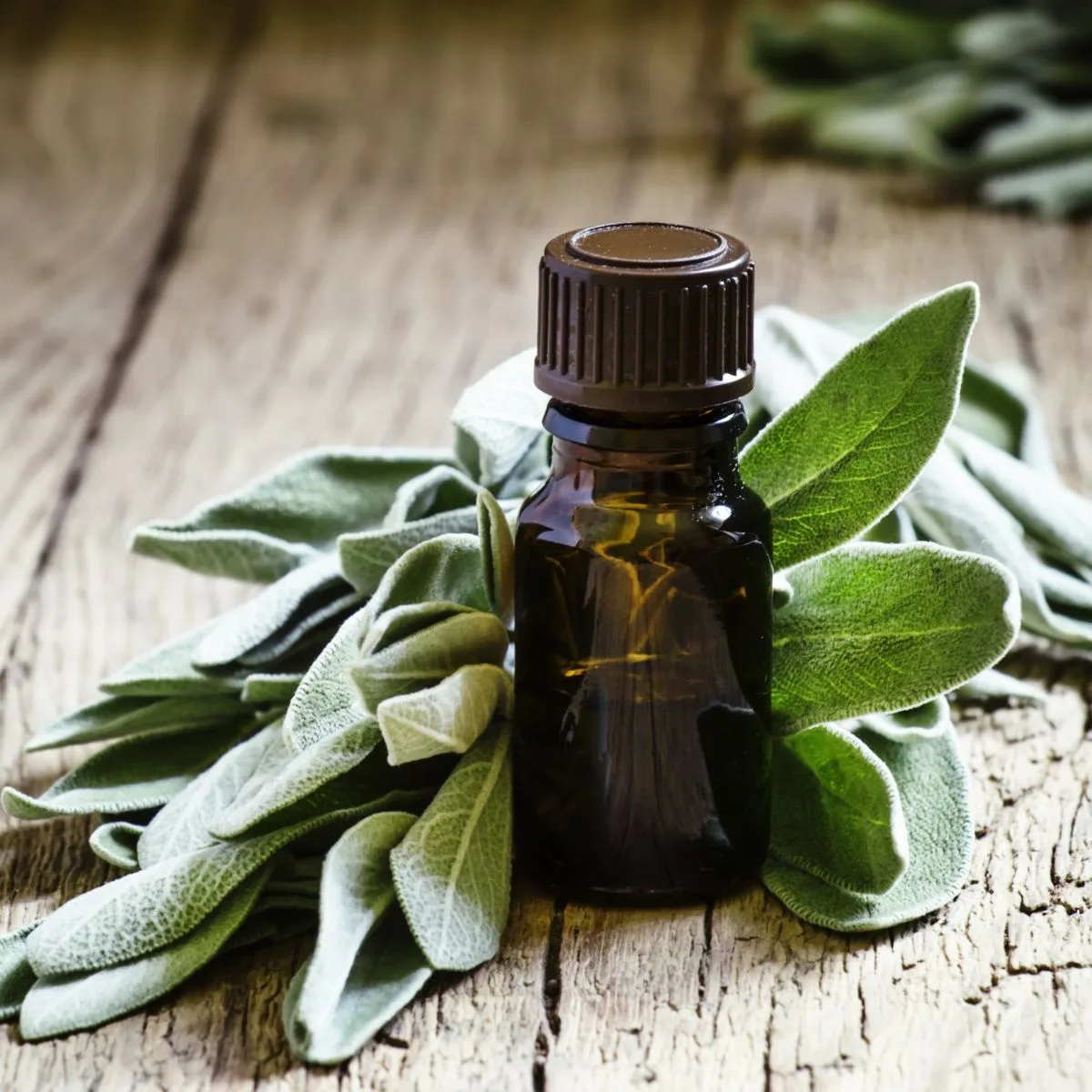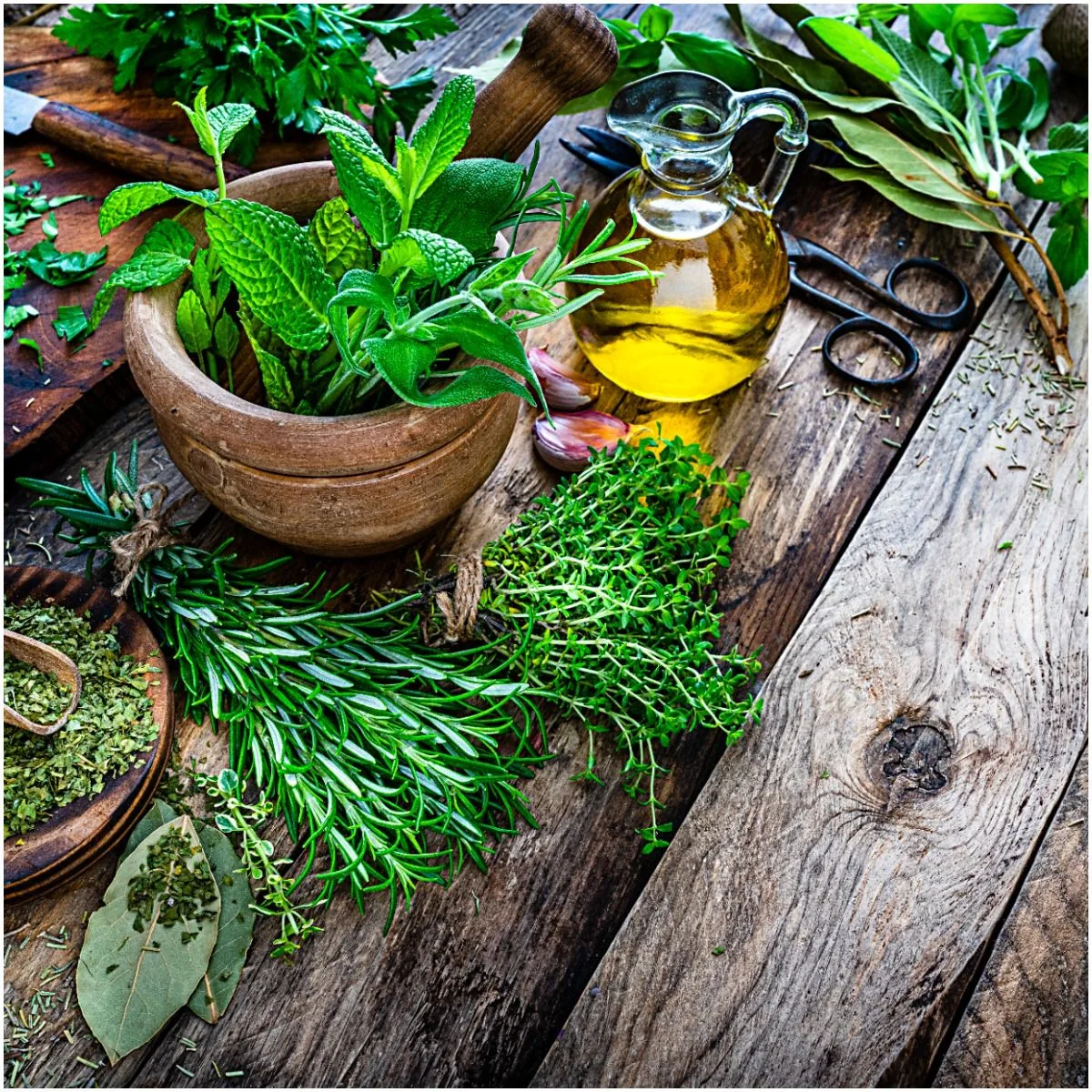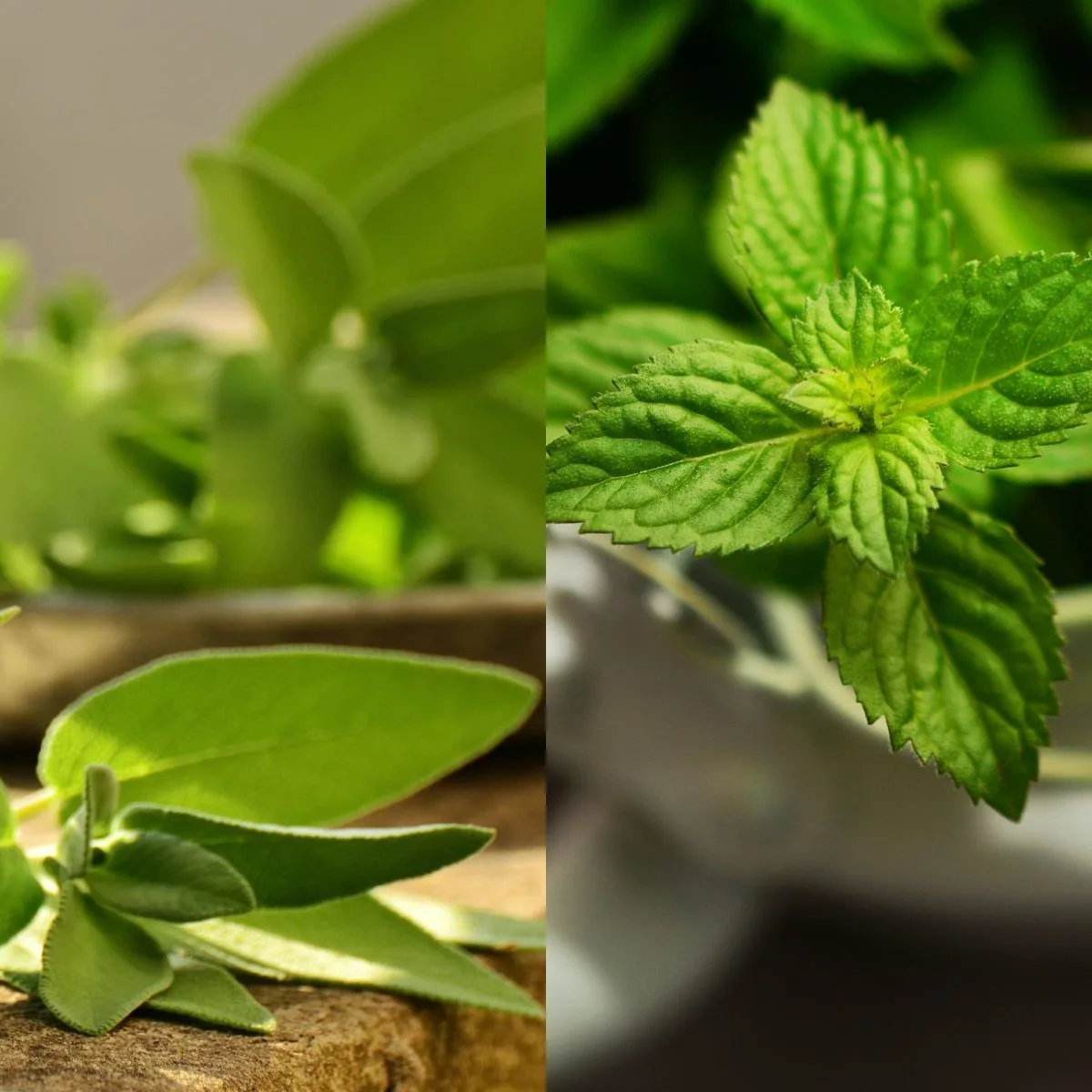How to Spot the Difference Between Sage vs Mint?
Introduction
When you’re getting into cooking, you will often see recipes that call for sage vs mint.
Even though sage is part of the mint family, it isn’t the same.
You won’t want to swap one for the other, though both of these herbs surely deserves a place in your kitchen.
Here’s what to know about the differences between sage vs mint.
What Is Sage?

Shutterstock
As part of the mint family, sage features gray-green leaves that are oval-shaped and a bit dusty in color.
They have fine little hairs on the leaves, giving it a fuzzy texture that is rather unpleasant if you try to consume it prior to cooking.
While there are a number of varieties of sage, the ones used for culinary purposes are usually common or garden sage.
The flavor of sage is something that is a bit unique.
It adds warmth and another layer of complexity into the dishes you create.
It’s especially good with other herbs to bring out the flavors of meat and seafood.
Used with lemon and butter, it can add that extra something that may have made your creation seem bland before.
You can use the fresh leaves of sage, dried leaves, or powdered sage to add to savory recipes.
Should I Use Fresh or Dried Sage?
Fortunately, dried sage still retains quite a bit of flavor.
Even still, fresh sage offers more brightness.
The key difference is that the drying process makes the flavors more concentrated, which may give it a slight bitterness.
If you’re out of fresh sage and need to use dried sage instead, you should use less than called for in the recipe to prevent turning your dish to the bitter side.
Rubbed sage is a form that is made by rubbing the leaves together until they turn into flakes.
Powdered sage is in a fine texture which isn’t good at upholding its flavor long.
This is a spice you’ll need to use up quickly in your cabinet before it gets past its prime.
What Is Mint?

@Getty
Since sage is part of the mint family, you may be considering your options with sage vs mint.
Mint is aromatic, and a common favorite among home gardeners.
You will mostly see spearmint and curly mint as the most popular varieties.
Peppermint is often too strong for use as a fresh herb in cooking, which is why you see it as peppermint oil so you can get the flavoring without overpowering everything.
Mint itself has a sweet taste and leaves a cooling sensation in the mouth.
Fresh mint leaves will give you the most flavor and aroma.
While you can use it dried too, the sweetness will be greatly reduced.
ALSO READ: Where Did Potato Wedges at Jack in the Box Go?
What to Do About Cooking with Sage vs Mint

https://pixabay.com/photos/sage-herbs-culinary-herbs-healthy-1544883/ & https://pixabay.com/photos/peppermint-medicinal-plant-2496363/
You can’t use sage for mint or vice versa.
Sage has a pungent, earthy taste and an aroma that is piney and citrusy.
Mint is sweet and cool in flavor.
They are from the same family but are worlds apart in taste.
Trying to swap one for the other would surely spell disaster in your kitchen.
When cooking with fresh sage, you should pull the leaves off the stems and rinse it with cold water.
Be sure to dry it well, and then you can use it in your recipes.
You can slice it into chiffonade (thinly-sliced ribbons), mince, or chop that sage.
If you’re working with dried rubbed sage or powdered sage, you can measure it with measuring spoons first.
Another great way to work with sage in your kitchen is to deep-fry the larger leaves, which makes for a tasty, crispy garnish.
Fresh sage is one of those herbs that tends to hold onto its flavor even during the cooking process, unlike many other fresh herbs.
Despite this, you should wait toward the end of your cook time, so it imparts its best flavors.
If you’re working with dried sage, that should be added at the beginning.
Sage can be very potent in flavor, so add a little at a time when you’re using the dried version, or you risk overpowering the dish.
It also works beautifully with thyme, rosemary, garlic, bay leaf, onion, and oregano.
That’s not the case for mint, though.
It would be an unpleasant combination of flavors to put mint into a recipe that calls for sage.
Mint is spectacular in its own way, though, with a bright flavor and aroma that can enhance cocktails and meals alike.
For mint, the young leaves tend to be harvested from the spring through the fall, but it is easy enough to grow on your windowsill to enjoy in your recipes at any time.
To use mint, you should cut it into chiffonade before adding it to your recipes.
It’s also wonderful when you put it in a hot or cold drink.
You can further release more flavors by muddling the leaves, as is done with the ever-popular mojito, or let it be a refreshing hot tea.
During the holidays, it can add a lively contrast to your cozy hot chocolate.
Mint can be used in sauces or baked treats too.
In Middle Eastern and Greek cuisine, it is an herb that is often paired with lamb or poultry. You’ll find it widely used in side dishes and salads.
ALSO READ: Guava vs Papaya: here’s what makes them unique
The Biggest Difference Between Sage vs Mint
Sage and mint come from the same family, however, they are worlds apart in flavor.
The key differences here are that sage has a more savory and warm taste while mint is sweet and cool.
Mint can be used in both sweet and savory recipes, but using sage in a sweet recipe like a dessert probably won’t go over too well.
To make the best of these herbs, you can grow them at home to use any time you like or keep them in your spice cabinet to whip up your best culinary creations!
ALSO READ: How Many Peanuts in a Jar of Peanut Butter
